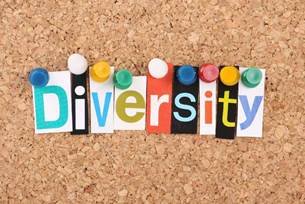Following the death of George Floyd and the subsequent protests, the number of diversity-related jobs increased significantly as organizations worked to address issues that could no longer be ignored. Diversity, equity, and inclusion (DEI) became more important as organizations launched initiatives focusing on making meaningful change. While some organizations simply increased their diversity efforts, others created new positions focused on diversity. These positions ranged from entry-level jobs to executive-level positions and spanned all types of organizations including academia. Indeed.com reported that diversity, inclusion, and belonging (DI&B) job postings increased by 123% between May and September of 2020.
As the number and types of positions increased, the terms used to describe these jobs have also expanded. The field which used to be referred to simply as diversity, now includes the terms equity, inclusion, and belonging. In general, diversity refers to the demographic makeup of the workforce. In line with this, the focus tends to be on removing bias and barriers in recruiting, selection, and promotional opportunities within organizations. Inclusion expanded the field to focus on creating a work environment where diverse groups of employees feel welcome and have opportunities to contribute to and succeed within the organization. The goal of equity is providing equal access to opportunities while attempting to level the playing field. Belonging, the newest addition to the diversity field, deals with an emotional state of feeling welcomed, valued, and supported by the organization which provides a sense of acceptance that helps the individual feel comfortable being themselves. Some consider belonging to be the most important, yet the most difficult to achieve.
Along with the increase in the number of postings for diversity jobs is the realization that the responsibility for diversity must be a shared responsibility. It cannot fall solely on one person within the organization. While many organizations have elevated the role of diversity by creating executive-level diversity positions, they are also creating diversity councils, committees, or advisory boards that help guide the diversity efforts. In addition, accountability is being shared as managers at all levels are held accountable for aspects of diversity within their areas. Furthermore, organizations are realizing that there are no quick fixes. Diversity takes time and a considerable amount of effort. As organizations commit more time and resources to diversity efforts, they are also finding new ways to measure and track diversity in ways that are meaningful to their success.
Recruitment efforts focus on ensuring that there is a diverse pool of candidates, and that bias and discrimination don’t limit opportunities for employment and advancement within the organization. In addition, organizations are looking to develop diverse pipelines for future employees. However, diversity goes beyond numerical representation. Climate surveys are used to measure the current state of diversity within an organization and identify areas of concern – for example, are all groups of employees being treated with the same level of dignity and respect? Over time, climate surveys can show the progress an organization has made due to diversity efforts.
Focus groups are often used to capture the lived experiences that can highlight micro-inequities and micro-aggressions that might otherwise go unrecognized. According to SHRM, micro-inequities are slights that demean or marginalize while micro-aggressions are acts that stereotype or denigrate. Some organizations are also introducing unconscious bias training to bring greater awareness to the subconscious, deeply ingrained biases, stereotypes, and attitudes that can affect our actions without us realizing it.
Increasingly, organizations are utilizing affinity groups – defined as employee groups organized based on social identity, shared characteristics, or life experiences. Affinity groups are beneficial in attracting, recruiting, and retaining diverse groups of employees. In recruiting, affinity groups can identify issues or alleviate concerns that may be specific to certain groups of candidates. For example, some minority groups may be concerned about the ability of the community to provide for their cultural needs. Affinity groups in the organization can help identify and address these concerns. Once employees join an organization, affinity groups can help them feel welcome, build better connections, and improve the retention rates.
Overall, organizations are recognizing that diversity is not just about numbers and representation, and it is not a quick, one-time fix. Diversity is complex and includes all of us. Therefore, it is only fitting that we should all be responsible for diversity.
- Holiday Connections – by Dr. Gail Dawson - December 13, 2023
- Diversity Trends 2023 – by Dr. Gail Dawson - January 12, 2023
- Trends in Diversity, Equity, Inclusion, and Belonging – by Gail Dawson - January 5, 2022

